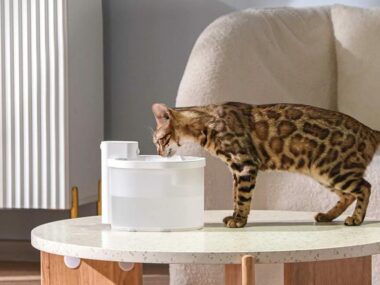Water may seem harmless, but it can quickly go from a minor inconvenience to a full-blown disaster when it finds its way into places it shouldn’t be. Whether it’s a hidden leak behind a wall or a flood in your basement, water damage can lead to costly repairs, structural issues, and even health hazards. While a small spill might be manageable with a towel and some elbow grease, some, if not most cases, demand immediate action from professionals, such as an emergency plumber in Adelaide, to prevent further damage. This blog explores the 10 most common water damages that require urgent attention.
Burst Pipes
One of the most common culprits of water damage is burst pipes, which can cause severe flooding in a matter of minutes. A burst pipe can flood your home and damage walls, floors, and personal belongings due to freezing temperatures, corrosion, or high water pressure. Time is of the essence when dealing with burst pipes—shutting off your water supply and calling residential water damage restoration professionals is a must to mitigate damage.
Leaky Roofs
If left unchecked, even the smallest drip from your roof can lead to significant structural damage. Water can seep through the attic, walls, and ceilings, weakening the structure over time. Moisture buildup from roof leaks also creates the perfect breeding ground for mold.
Foundation Cracks
Cracks in your foundation can allow water to seep into your basement or crawl space, resulting in flooding, dampness, and structural instability. Foundation issues often develop over time, and what starts as a small crack can expand with the freeze-thaw cycle or soil shifts.
Sewage Backups
Sewage backups are disgusting and pose serious health risks due to wastewater’s harmful bacteria and pathogens. This type of water damage can occur due to clogged drains, blocked sewer lines, or heavy rain overwhelming the system. It’s crucial to call professionals immediately if you experience a sewage backup—this is not a DIY job.
Residential water damage restoration teams are equipped to handle the cleanup, sanitization, and repairs needed to restore your home safely.
Appliance Leaks
Household appliances like dishwashers, washing machines, and refrigerators can be a source of water damage if they malfunction or their hoses and seals wear out. A slow leak might go unnoticed for weeks or even months, causing water to accumulate behind walls and under floors. This hidden moisture can lead to mold growth, rotting wood, and damaged flooring.
Flooding from Heavy Rain
If you live in an area prone to heavy rain or storms, your home is at risk for flooding. Water can overwhelm drainage systems, seep through windows, or accumulate in basements.

Floodwaters often bring in contaminants, such as chemicals and bacteria, which can further damage your home’s structure and affect your health. Immediate action is critical to prevent long-term damage, and restoration professionals have the tools and expertise to dry out your home.
Bathroom Overflows
Clogged toilets, overflowing bathtubs, and leaky faucets are all potential sources of water damage in the bathroom. When plumbing fixtures fail or drains get blocked, water can spread across floors, seep into walls, and even damage the ceiling of the room below. While a quick fix might seem possible, water damage from bathroom overflows can be more extensive than it appears. It’s always a good idea to have a professional evaluate the situation.
HVAC System Leaks
Your heating, ventilation, and air conditioning (HVAC) system can cause water damage if it leaks or produces excessive condensation. Blocked drainage pipes or malfunctioning parts can cause water to accumulate around your HVAC unit, damaging nearby walls, floors, or insulation. Water damage restoration experts can help fix the leaks and address any structural issues caused by the water, ensuring your HVAC system runs smoothly without further risks.
Gutter and Downspout Failures
Gutters and downspouts are designed to channel rainwater away from your home’s foundation. However, if they become clogged with debris, water can overflow and seep into your walls or foundation. This excess water can lead to mold growth, wood rot, and damage to your home’s structural integrity. Regular gutter cleaning can prevent many of these problems, but it’s best to call the professionals for repairs and water mitigation if damage has already occurred.
Attic Moisture
Poor ventilation or insulation in your attic can lead to condensation and excess moisture. Over time, this can cause mold, wood rot, and damage to your insulation. Sometimes, water from a leaky roof can pool in the attic without being noticed, leading to major structural issues. Attics are often out of sight and out of mind, but water damage here can go unnoticed until it’s too late.
Conclusion
Water damage in your home is a serious issue that should never be taken lightly. What starts as a small leak can quickly escalate into a situation threatening your home’s structural integrity and your family’s health.

Whether it’s a burst pipe, a leaky roof, or an appliance malfunction, residential water damage restoration professionals have the tools, experience, and knowledge to address the issue at its source, dry out your home, and restore it to its original condition.
*Sponsored Blog Post






